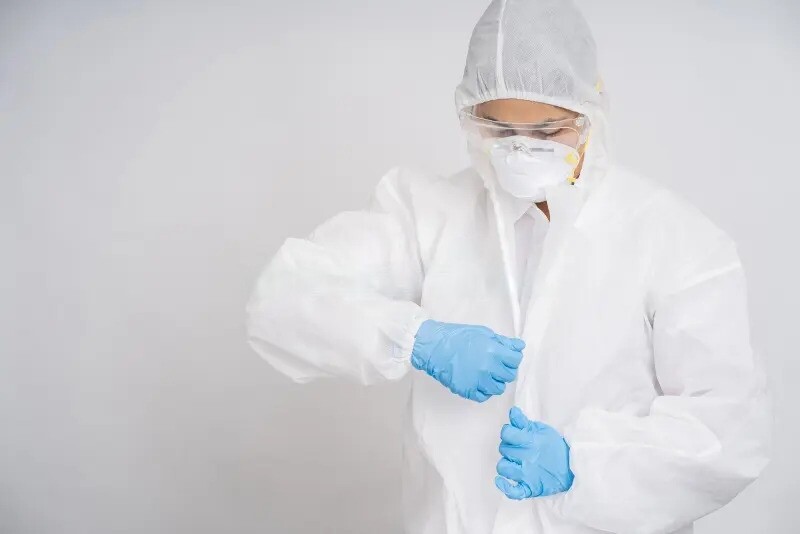


Reliable industrial protective clothing—from flame-resistant and chemical suits to hi-vis and cut-resistant gear—for maximum safety and compliance.
In hazardous work environments, protective clothing isn’t just a safety measure—it’s a necessity. Industrial settings such as construction, mining, chemical processing, and manufacturing expose workers to risks ranging from extreme temperatures to chemical spills and physical injury. For employers and safety managers, selecting the best protective clothing is critical to ensure employee safety, meet regulatory standards, and maintain productivity.
Here’s a comprehensive overview of the most effective types of protective clothing used across Australian industrial sectors and why they matter.
In industries where fire hazards are a concern, like oil and gas, electrical maintenance, and welding, flame-resistant clothing is essential. These garments are engineered to self-extinguish, preventing further injury once the ignition source is removed.
Key Features:
Made with inherently flame-resistant fibres (e.g., Nomex) or treated cotton
Meet standards like NFPA 2112 or ISO 11612
Maintain protective properties through multiple washes
Designed for durability and mobility in harsh environments
Properly certified FRC protects against thermal exposure without compromising comfort, making it indispensable for high-risk roles.
Chemical protective clothing provides a vital barrier against liquid and gas-based hazards. From laboratory work to large-scale manufacturing, these garments shield the skin from corrosive substances and harmful vapours.
Common Types:
Coveralls with sealed seams and chemical-resistant coatings
Type 1 to Type 6 suits, ranging from full gas-tight suits to light splash protection
Accompanied by appropriate gloves, boots, and face shields
Industries involving pesticides, acids, and solvents require chemical PPE that aligns with both hazard type and duration of exposure.
Hi-vis clothing enhances visibility in low-light or high-traffic environments, reducing the risk of accidents. It’s especially critical for roadside, construction, logistics, and railway workers.
Essential Qualities:
Fluorescent fabrics in yellow, orange, or red hues
Reflective strips for night-time visibility
Conformity with AS/NZS 4602.1 standards
Day-only or day/night classification
Reliable hi-vis clothing ensures that workers remain clearly visible to moving machinery, vehicles, and fellow personnel.
For tasks involving glass, metal, or sharp tools, cut-resistant apparel is essential. These garments protect workers from abrasions, lacerations, and punctures during handling or machine operation.
Key Items:
Arm guards and jackets made from high-strength fibres (e.g., Kevlar, Dyneema)
Clothing rated under EN388 or ANSI standards
Integrated reinforcements in gloves and sleeves
This category is especially relevant in recycling plants, fabrication workshops, and metal foundries.
In environments where cleanliness and contamination control are vital—such as food production, pharmaceutical manufacturing, or cleanrooms—disposable clothing offers effective single-use protection.
Typical Garments:
Polypropylene coveralls and lab coats
Beard covers, shoe covers, and hair nets
Gowns and sleeve protectors
Although lightweight and inexpensive, disposable protective wear must meet hygiene protocols while maintaining wearability for long shifts.
In outdoor or refrigerated environments, protective clothing must insulate the body against cold stress while allowing ease of movement. Prolonged exposure to wet or freezing conditions increases the risk of injury and illness.
Important Considerations:
Waterproof outer layers with taped seams
Thermal insulation with moisture-wicking linings
Windproof fabrics and ergonomic cuts
Compliance with local weather safety regulations
Cold-weather PPE is crucial for industries like construction, shipping, and outdoor logistics.
Choosing the best protective clothing isn’t just about picking the right fabric—it’s about working with trusted suppliers. Livingstone, one of Australia’s leading names in industrial and medical safety, offers a curated range of protective garments that meet strict regulatory and quality standards.
From flame-resistant overalls to chemical suits and hi-vis vests, Livingstone supplies industries with solutions tailored to real-world demands. Their clothing lines are rigorously tested for durability, safety, and comfort, making them a dependable choice for safety managers seeking both compliance and performance.
Industrial workplaces demand more than just basic PPE. The risks are diverse, and so should be the protective solutions. By choosing the right combination of clothing, specific to each hazard, you ensure not just regulatory adherence but genuine safety and operational efficiency.
The most reliable protection clothing balances protection, comfort, durability, and compliance. And when sourced from a trusted name like Livingstone, you can be confident that your workforce is well-equipped to face daily hazards with confidence.
